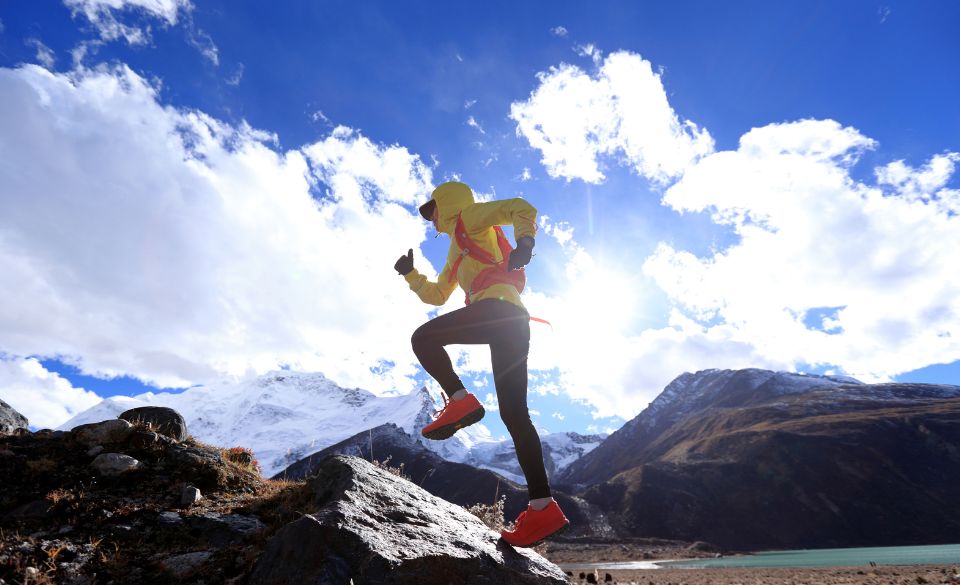
Why Do Athletes Struggle to Breathe at High Altitudes?
Page Contents
- Understanding the Effects of High Altitudes on Breathing
- Studies on Athletes’ Breathing Difficulties at High Altitudes
- Factors Affecting Breathing at High Altitudes
- Coping Strategies and Recommendations
- The Role of Genetics and Individual Variability
- The Psychological Aspect of Breathing at High Altitudes
- Final Words
If you’ve ever watched athletes compete at high-altitude locations, you may have noticed some of them gasping for breath or appearing more fatigued than usual. It’s a common phenomenon that has intrigued sports scientists and coaches alike. In this blog post, we’ll delve into the reasons why athletes often struggle to breathe at high altitudes and explore some studies that shed light on this challenging aspect of high-altitude performance.
Understanding the Effects of High Altitudes on Breathing
High altitudes are characterized by lower levels of oxygen in the air, which can have a significant impact on the human body, especially during physical exertion. As athletes ascend to higher elevations, the air pressure decreases, making it harder for their lungs to take in oxygen with each breath. The body tries to compensate for the reduced oxygen availability by breathing faster and deeper. This increased respiratory rate, however, can lead to a sensation of breathlessness and, in some cases, even hyperventilation.
At high altitudes, the body also experiences physiological changes to cope with the lower oxygen levels. It produces more red blood cells to carry the limited oxygen more efficiently, a process known as acclimatization. However, this adaptation takes time, and athletes who compete at high altitudes without adequate acclimatization may find their performance hindered due to reduced oxygen delivery to muscles and organs.
Studies on Athletes’ Breathing Difficulties at High Altitudes
Numerous studies have investigated the effects of high altitudes on athletes’ breathing and performance. One particular study conducted on cyclists exposed them to high altitudes and observed their respiratory responses during exercise. The researchers found that the cyclists experienced a higher respiratory rate and minute ventilation, indicating an increased effort to maintain oxygen supply to meet the demands of exercise at altitude. This heightened respiratory response likely contributes to the sensation of breathlessness that athletes commonly encounter.
Another study examined the impact of high-altitude training on runners’ breathing patterns. The researchers discovered that athletes who underwent acclimatization training at high altitudes showed improvements in their lung function and oxygen uptake during exercise. This finding supports the importance of acclimatization in enhancing athletes’ breathing efficiency and overall performance in oxygen-deprived environments.
Factors Affecting Breathing at High Altitudes
Several factors can influence how athletes adapt and respond to high-altitude conditions. One crucial element is the rate of ascent. Rapidly ascending to high altitudes without allowing the body sufficient time to acclimate can lead to more severe breathing difficulties and altitude sickness. Gradual ascent, on the other hand, gives the body time to adjust to the reduced oxygen levels, minimizing the impact on breathing and performance.
The type of sport or activity can also play a role in athletes’ breathing challenges at high altitudes. Endurance sports like running, cycling, and mountaineering require a constant supply of oxygen to sustain performance, making them more susceptible to altitude-related breathing difficulties. In contrast, sports that involve intermittent bursts of high-intensity effort, such as sprinting, may experience different challenges due to the body’s ability to rely on anaerobic energy systems to a greater extent.
Coping Strategies and Recommendations
For athletes planning to compete or train at high altitudes, several coping strategies can help improve breathing and overall performance. Gradual acclimatization is key, allowing the body to adapt to the reduced oxygen levels naturally. Pre-acclimatization through altitude training or simulated altitude environments can also be beneficial.
Proper hydration is vital to support respiratory function, as dehydration can exacerbate breathing difficulties. Athletes should also be mindful of their pace and effort level, taking into account the reduced oxygen supply. Adjusting training intensities and incorporating recovery periods can help athletes manage the challenges of high-altitude environments effectively.
The Role of Genetics and Individual Variability
It’s important to acknowledge that athletes’ responses to high-altitude conditions can vary significantly based on genetic factors and individual physiology. Some individuals may be genetically predisposed to acclimate more effectively to high altitudes, while others might experience more severe breathing difficulties. Genetic research in this area is still ongoing, and understanding these individual differences can provide valuable insights for athletes and their coaches.
Moreover, athletes who regularly train at lower elevations might experience a greater challenge when competing at high altitudes. The body becomes accustomed to the higher oxygen levels at sea level, and sudden exposure to reduced oxygen at high elevations can be a shock to the system. This is why many professional athletes incorporate altitude training camps into their preparation for high-altitude competitions. By spending time at higher elevations before the event, athletes can trigger the acclimatization process and improve their breathing and overall performance.
The Psychological Aspect of Breathing at High Altitudes
In addition to the physiological factors, the psychological aspect of breathing at high altitudes should not be overlooked. Athletes might experience anxiety or stress about the potential impact of reduced oxygen levels on their performance. These mental factors can influence breathing patterns and contribute to a sense of breathlessness, even if the physiological response is adequate. Practicing mindfulness, relaxation techniques, and positive visualization can help athletes manage their mental state and maintain better control over their breathing.
Furthermore, the environment and weather conditions at high altitudes can also affect athletes’ breathing. Cold, dry air can irritate the respiratory system and lead to a feeling of shortness of breath. Athletes might benefit from using breathing masks or scarves to warm and humidify the air before it enters their lungs, reducing potential discomfort and irritation.
Final Words
The struggle to breathe at high altitudes is a multi-faceted challenge that athletes face when competing or training in such environments. Reduced oxygen levels, changes in respiratory responses, and the body’s acclimatization process all play crucial roles in determining athletes’ breathing difficulties at high elevations. However, with proper preparation, acclimatization, and psychological strategies, athletes can mitigate the impact of altitude on their performance.
Understanding the factors that influence breathing at high altitudes empowers athletes to make informed decisions and optimize their training regimens accordingly. From gradually ascending to high elevations and acclimatizing to engaging in altitude training camps, athletes can adapt their routines to thrive in oxygen-deprived conditions. Remembering that each individual’s response is unique due to genetics and personal physiology, athletes and coaches can tailor their approaches to maximize performance at the summit.
In the end, while the thin air may challenge their lungs, athletes who brave the high altitudes can overcome breathing struggles and achieve remarkable feats of endurance, resilience, and determination that inspire us all. Whether they are reaching the peak of a mountain or crossing the finish line at an altitude race, their achievements serve as a testament to the incredible capabilities of the human body and spirit amidst the breathtaking heights.




